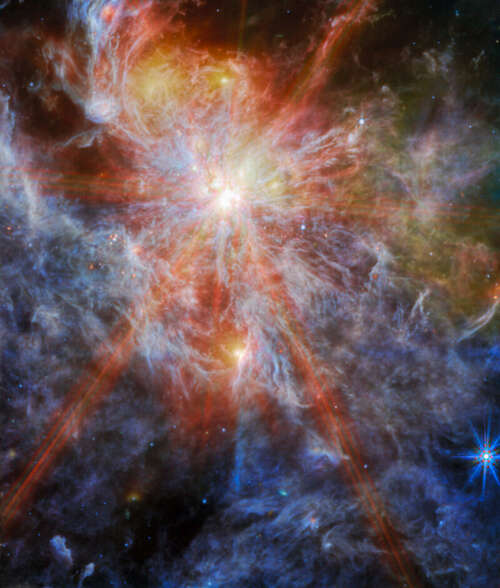
ESA/Webb, NASA & CSA, O. Nayak, M. Meixner
Good morning. It’s January 25, and today’s image is nothing short of amazing and inspirational.
Courtesy of the James Webb Space Telescope, this image features a nebula, N79, in the Large Magellanic Cloud, a nearby small galaxy. (Can we call galaxies small?) This is a massive, super-active star-forming region that spans more than 1,600 light-years. So what’s with that bright spot in the middle of the image? It’s a bright young star.
“The distinct ‘starburst’ pattern surrounding this bright object is a series of diffraction spikes,” explains the European Space Agency. “All telescopes which use a mirror to collect light, as Webb does, have this form of artifact which arises from the design of the telescope. In Webb’s case, the six largest starburst spikes appear because of the hexagonal symmetry of Webb’s 18 primary mirror segments. Patterns like these are only noticeable around very bright, compact objects, where all the light comes from the same place. Most galaxies, even though they appear very small to our eyes, are darker and more spread out than a single star, and therefore do not show this pattern.”
Webb is looking at this active region to help astronomers understand what star-forming areas may have looked like in the early Universe.
Source: ESA/Webb, NASA & CSA, O. Nayak, M. Meixner
Do you want to submit a photo for the Daily Telescope? Reach out and say hello.

